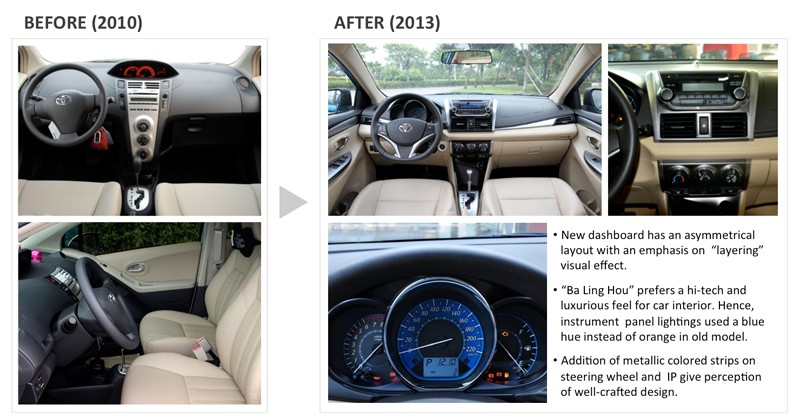Co-creating A Better Automotive Experience

Engaging China's '80s Generation “Ba Ling Hou” to co-create a car interior designed just for them.
Background
No brand wants to be considered "outdated" or "not relevant". In the past, leading automotive brands like Toyota, GM and others deeply followed sales and marketing departments’ throughout the design process to create future automotive experiences. Often, because of long development cycles when cars launch they are already outdated. A approach was needed.
Our client realised that their brand image and vehicle interior space design were considered outdated and irrelevant to young Chinese consumers. So they decided on a different approach for designing in China for China.
In China, “Ba Ling Hou” people born durring "80's" are often considered the kingmaker in automotive industry. According to a news article from Chexun.com, an automotive website, the “Ba Ling Hou” accounted for 47% of total sales for passenger vehicles in 2012. Their purchase choices are decisive to the success of automotive brands.
In this project, we used a co-creation approach and activity-based probing process to help these young consumers to better articulate their lifestyle, aspirations and aesthetic preferences. With this knowledge, we envisioned interior color, material and finishing (CMF) strategies that were fitting to the emerging expectations of “Ba Ling Hou” consumers.
When trying to connect to different segments in China, traditional market research does not always give the right indicators and insights for designing product. One great example of is when our client, one of the largest automotive manufacturers in the world, was dealt a big blow after its newly launched, youth-oriented car model could not reach the level of success experienced in the American market.
The lack of success was baffling to the development teams, despite having their sales and marketing departments’ involvement throughout the design process. They had to look for answers to why its brand image and vehicle interior space design were considered outdated and irrelevant to young Chinese consumers. Believing a new research approach was needed, they came to CBi China Bridge with the objective of gathering consumer insights on “Ba Ling Hou” consumers and defining design directions for future vehicle models.
OBJECTIVE
Reconnect with “Ba Ling Hou” through co-creation
Noticing young Chinese consumers are very active and opinionated, CBi China Bridge recommended the use of a Co-Creation Workshop as primary research technique. Through specially designed activities, participants can better articulate their needs and values in comparison to traditional research methodologies like in-depth interviews or questionnaires.
In this project, we invited 40 consumers into the co-creation workshop. Beside discussion on key topics such as lifestyle, values and aspirations, each participant was asked to create an image collage to describe personal style preferences and illustrate their ideal future lives through sketches. Additionally, their comments on existing vehicle designs were collected.

PROCESS
DISCOVER characteristics of “Ba Ling Hou” and their aesthetic preferences
Guided by research insights, we created a keyword map that represented the key characteristics of Chinese “Ba Ling Hou” consumers. It helped our client’s internal cross-functional teams to share common understanding on target customers as they develop future products and services.
Moreover, our team observed that there were 5 major forms of aesthetic preferences among the “80-Hou”: “Pop & Vibrant”, “Luxurious Elegance”, “Cool & Tough”, “Professionalism” and “True Self”. Mood boards were created to illustrate their preferred styles.

DEFINE color, material and finishing (CMF) strategy for interior design
We developed theme boards to provide recommendations on design elements that would be fitting to each aesthetic preference group. These image boards could also be used as creative inspirations for automotive interior designers.
We also evaluated existing products’ interior design following principles defined by the mood boards. By combining research info with product positioning inputs from the client’s marketing team, we proposed interior trim recommendations for each vehicle model.

RESULT
Forward-looking CMF strategy for future vehicles' interior design
Our client swiftly adopted our design recommendations for its new generation of models. For instance, one of the previous-generation models used orange color on its instrumentation’s lighting, which was considered neither cool nor elegant by “Ba Ling Hou”. As a result, the new model switched to blue instrument lightings to create a high-tech and luxurious feel that young Chinese consumers desire. The new model’s dashboard and steering wheel were also accentuated with thin strips of silver to emphasize the dynamic feel of the vehicle.

IMPACT
Customer-centered and co-created interior trim design meant a more relevant product experience for young drivers, which in turn, led to enhanced sales.



